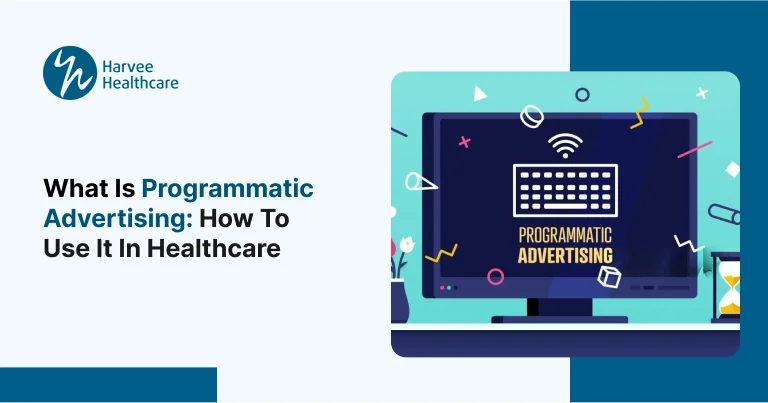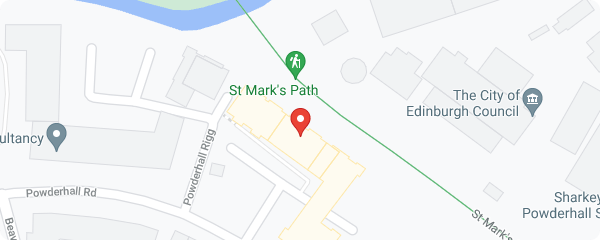
What Is Programmatic Advertising: How to Use It in Healthcare
Programmatic advertising refers to the automated purchase and management of digital ad inventory through platforms that enable real-time bidding, precise targeting, and optimization based on data. It streamlines traditional manual ad buying by allowing healthcare marketers to reach the right audience with the right message at the right time. Whenever there is a concern about health or healthcare providers for an individual, they go into the internet and find the contents that give results to them. In such a digitalized world, programmatic advertising helps healthcare digital marketers transform highly regulated industries like healthcare and pharma.
Healthcare providers and brands can deliver tailored messages to patients and healthcare professionals across channels like web, mobile, streaming, social, and connected TV from a single platform by leveraging rich data (behavioral, demographic, intent-based) and AI-driven bidding.

1. Why Choose Programmatic Advertising in Healthcare?
- Precision Targeting
- Filter audiences by age, location, health conditions, and online behavior.
- Example: A diabetes clinic can target users searching for “insulin pumps” or “managing type 2 diabetes.”
- Scalability & Real-Time Optimization
- Dynamic bid adjustments based on performance metrics like CTR, conversions, or CPI.
- Real-time dashboards allow continuous campaign tuning.
- Cost-Effectiveness
- Efficient ad spend due to granular targeting and automated optimization.
- According to WebFX, the healthcare CPC is ~$3.17, and the cost per lead is ~$401. By reducing waste, programmatic campaigns can outperform this data.
- Measuring ROI
2. Real-World Healthcare Programmatic Success Stories
a) Pharma Sees Surge in HCP (Healthcare Professionals) Engagement
In 2025, pharmaceutical brands used programmatic advertising to reach patients and HCPs. A particular article on pharmaceutical programmatic advertising proves this.
- Precision targeting for doctors who recently read about new diabetic medications.
- Compliance filters were added to prevent off-label messaging.
- This ended with good results as it increased informational downloads and in-practice inquiries.
b) Hospital System Drives Service Line Growth
A healthcare system partnered with MiQ to measure ad effectiveness. By targeting users researching cardiac care, scheduling services, and booking appointments, the system achieved service line awareness uplift and proved the ROI potential of programmatic advertising.
c) Private Practice Marketing
A plastic surgery practice (Dr. William Franckle) invested in digital marketing using paid search and display and achieved an 873% ROI in 2020, with Organic leads up 57% and website revenue +35% YOY. Though not strictly programmatic, this shows how targeted digital spending yields high returns.
3. Fast Stats: The State of Digital Healthcare Marketing
- 72% of ad budgets are already invested online.
- U.S. healthcare ad spending is forecast to grow 4.6% annually through 2028, from $22.4B in 2022 to $29.2B in 2028.
- Industry average healthcare ROI: 3.62.
- 65% of patients google before contacting doctors, and 33% watch YouTube before medical consultations.
These stats highlight healthcare marketers’ need to optimize ad strategies and why programmatic is central to success.
4. How Programmatic Advertising Works
- Audience Data Onboarding
- Use first-party data (CRM, website behavior) and third-party data (health interests, insurance status).
- Identify segments like “mothers researching pediatric asthma treatments.”
- Media Buying via DSPs & SSPs
- Demand-side platforms bid in real-time on ad inventory across open exchanges or private marketplaces.
- Supply‑Side Platforms facilitate publisher inventory.
- Ad Delivery & Creative Flexibility
- Deploy multi-format creatives like video, display, and native.
- Customize messaging for UGC videos (“You’re not alone in managing arthritis.”)
- Real-Time Bidding & Optimization
- AI adapts bid strategies to meet CPA or CPI targets.
- Continuously optimize creatives and placements based on performance.
- Attribution & Analytics
- Tune attributions: impressions → site visits → appointment booking.
- Combine digital metrics with offline conversions (calls/bookings).
5. Best Practices for Healthcare Programmatic Ads
Follow these guidelines to make your campaigns compliant, effective, and trustworthy.
- Prioritize Privacy & Compliance
- Use HIPAA‑compliant vendors and limit personal data exposure.
- Include legal reviews for regulated claims.
- Use First-Party Data
- CRM data—like patient interest or prior appointments—is gold.
- AI+ first-party segmentation boosts ROI by 20–30%.
- Run Multi-Channel Campaigns
- Combine Paid Search + Programmatic display/video + Social ads (LinkedIn, YouTube).
- 47% of admins use X (formerly Twitter), and 57% use LinkedIn for healthcare marketing.
- Craft Patient-Centric Creative
- Use empathetic and educational messaging. For example, “Early detection of breast cancer saves lives” vs. generic “Schedule a mammogram.”
- Test & Learn Fast
- A/B tests the headlines, visuals, and CTAs of your campaign.
- Optimize padding as small tweaks can yield big uplifts in engagement.
- Track & Measure End-to-End
- Tie ads to offline actions via CRM integration.
- Measure against the benchmark ROI of 3.62 for healthcare.
6. Implementation Blueprint
- Define Objectives & KPIs: For example, a “30% increase in new patient appointments at $150 CPA within 90 days.”
- Assemble Data Layer: Activate site tags, CRM segments, and interest-based audiences.
- Select DSP & Publishers: Choose healthcare-safe exchanges or premium health publishers.
- Build & Deploy Creatives: Use compliant templates and customize per segment.
- Launch Campaign & Monitor: Monitor CTR, conversions, and CPA to identify underperforming boxes.
- Optimize & Scale: Shift spend to high-performing segments and pause low-performing creatives.
- Report & Refine: Monitor, report, and refine the key metrics, including cost per appointment, ROI, and compliance.
7. Predictions & Emerging Trends
- AI-driven Copywriting: Automated ad writing matches top CTRs and is proven in an article.
- Omnichannel Integration: Merge programmatic, search, and social for holistic experiences.
- Privacy-first ID strategies: Contextual targeting and cohort-based audience modeling will rise.
- Video & Connected TV: Healthcare marketers adopt these premium placements for awareness campaigns.
Takeaway
Programmatic advertising offers healthcare marketers the scalability, targeting precision, and real-time optimization needed to stay ahead of competitors. Healthcare is nearly projected to reach a digital ad spend of 20 billion USD at the end of 2025. So, if you are a healthcare provider who has yet to adapt to programmatic advertising, you are missing the boat.
Merge with Harvee Healthcare to get a measurable ROI from programmatic advertising. We use best practices like compliance, first-party data, empathetic creativity, and cross-channel optimization.
If you’re ready to move your healthcare marketing from cost-center to profit-generator, contact Harvee Healthcare.















